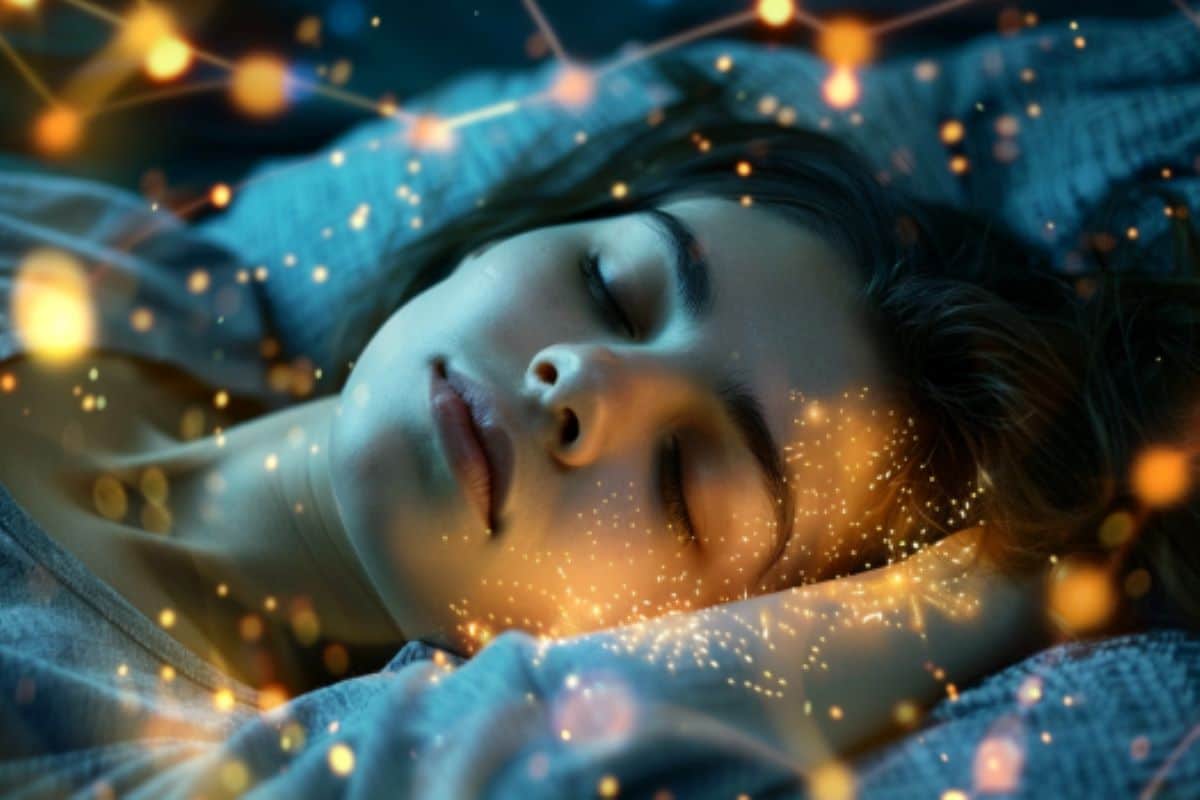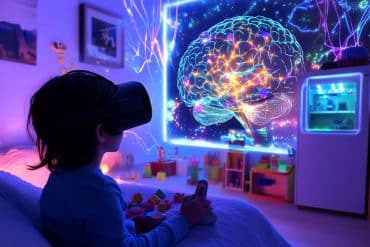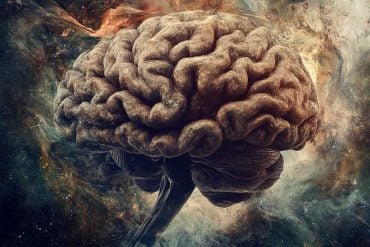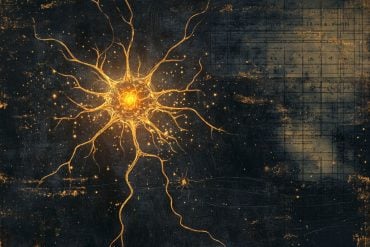Summary: Researchers discovered that certain neurons not only replay past experiences but also anticipate future events during sleep.
By studying rats’ hippocampal activity, they found that neurons stabilize spatial representations and prepare for future tasks. This groundbreaking study reveals the role of sleep in neuroplasticity and memory consolidation.
Key Facts:
- Neurons in the hippocampus anticipate future experiences during sleep.
- Sharp wave ripples in the brain aid in memory consolidation and spatial representation.
- The study uses advanced machine learning to track neuron activity and predict behavior.
Source: Rice University
Some dreams may, in fact, predict the future: New research has found that during sleep, some neurons not only replay the recent past but also anticipate future experience.
The discovery is one in a series of insights afforded by a study on sleep and learning published in Nature by a team of researchers from Rice University and the University of Michigan.

The research offers an unprecedented view of how individual neurons in the hippocampus of rats stabilize and tune spatial representations during periods of rest following the animals’ first time running a maze.
“Certain neurons fire in response to specific stimuli,” said Kamran Diba, an associate professor of anesthesiology at Michigan and corresponding author on the study. “Neurons in the visual cortex fire when presented with the appropriate visual stimulus. The neurons we’re studying show place preferences.”
Together with collaborators in Michigan’s Neural Circuits and Memory Lab led by Diba, Rice neuroscientist Caleb Kemere has been studying the process by which these specialized neurons produce a representation of the world after a new experience.
Specifically, the researchers tracked sharp wave ripples, a pattern of neuronal activation known to play a role in consolidating new memories and, more recently, also shown to tag which parts of a new experience are to be stored as memories.
“For the first time in this paper, we observed how these individual neurons stabilize spatial representations during rest periods,” said Kemere, associate professor of electrical and computer engineering and bioengineering at Rice.
Sleep is critical for memory and learning ⎯ science has quantified this age-old intuition by measuring performance on memory tests after a nap as opposed to after a period of waking or even sleep deprivation.
A couple of decades ago, scientists also discovered that neurons in the brains of sleeping animals that had been allowed to explore a new setting just before resting were firing in ways that replayed the animals’ trajectories during exploration.
This finding aligned with the knowledge that sleep helps new experiences crystallize into stable memories, thus suggesting that the spatial representations of many of these specialized neurons in the hippocampus are stable during sleep. However, the researchers wanted to see if there was more to the story.
“We imagined that some neurons might change their representations ⎯ reflecting the experience we’ve all had of waking up with a new understanding of a problem,” Kemere said. “Showing this, however, required that we track how individual neurons achieve spatial tuning, i.e., the process by which the brain learns to navigate a new route or environment.”
The researchers trained rats to run back and forth on a raised track with liquid reward at either end and observed how individual neurons in the animals’ hippocampus would “spike” in the process. By calculating an average spiking rate over many laps back and forth, the researchers were able to estimate the neurons’ place field — or the area in the environment that a given neuron “cared” about most.
“The critical point here is that place fields are estimated using the behavior of the animal,” Kemere said, highlighting the challenge of assessing what happens to place fields during rest periods when the animal is not physically moving through the maze.
“I’ve been thinking for a long time about how we can evaluate the preferences of neurons outside of the maze, such as during sleep,” Diba said. “We addressed this challenge by relating the activity of each individual neuron to the activity of all the other neurons.”
This was the study’s key innovation: The researchers developed a statistical machine learning approach that used the other neurons surveyed to map out an estimate of where the animal was dreaming of being. They next used those dreamed positions to estimate the spatial tuning process for each neuron in their data sets.
“The ability to track the preferences of neurons even without a stimulus was an important breakthrough for us,” Diba said.
Both Diba and Kemere commended Kourosh Maboudi, a postdoctoral researcher at Michigan and the lead author on the study, for his role in the development of the learned tuning approach.
The method confirmed that the spatial representations that form during the experience of a new environment are, for most neurons, stable across several hours of postexperience sleep. But as the researchers had anticipated, there was more to the story.
“The thing that I loved the most about this research and the reason that I was so excited about it is finding that it’s not necessarily the case that during sleep the only thing these neurons do is to stabilize a memory of the experience,” Kemere said. “It turns out some neurons end up doing something else.
“We can see these other changes occurring during sleep, and when we put the animals back in the environment a second time, we can validate that these changes really do reflect something that was learned while the animals were asleep. It’s as if the second exposure to the space actually happens while the animal is sleeping.”
This is significant because it constitutes direct observation of neuroplasticity as it is happening during sleep. Kemere underscored that almost all plasticity research ⎯ which examines the mechanisms that allow neurons to rewire and form new representations ⎯ looks at what happens during waking periods as stimuli are being presented rather than during sleep when the relevant stimuli are absent.
“It seems like plasticity or rewiring in the brain requires really fast timescales,” Diba said, pointing to the fascinating relationship between the duration of actual experience, “which can take up the span of seconds, minutes but also hours or days,” and actual memories, “which are super compressed.”
“If you remember anything, the memory ⎯ it’s instant,” Diba said, referencing a famous literary passage by French modernist writer Marcel Proust in which a childhood memory unspools a whole lost world of past experience at barely a moment’s notice.
The study is an example of advancements in neuroscience enabled in the past few decades by technological progress in the design of stable, high-resolution neural probes as well as by machine learning-backed computation power.
In light of these advancements, Kemere said brain science stands poised to make significant progress in the future, while at the same time expressing concern for the impact of recent budget cuts on continued research.
“It’s quite possible that if we were starting this work today, we might not have been able to do these experiments and get these results,” Kemere said. “We’re definitely grateful that the opportunity was there.”
Funding: The research was supported by the National Institutes of Health (R01NS115233, R01MH117964). The content in this press release is solely the responsibility of the authors and does not necessarily represent the official views of the NIH.
About this sleep and neuroscience news
Author: Silvia Cernea Clark
Source: Rice University
Contact: Silvia Cernea Clark – Rice University
Image: The image is credited to Neuroscience News
Original Research: Closed access.
“Retuning of hippocampal representations during sleep” by Kamran Diba et al. Nature
Abstract
Retuning of hippocampal representations during sleep
Hippocampal representations that underlie spatial memory undergo continuous refinement following formation.
Here, to track the spatial tuning of neurons dynamically during offline states, we used a new Bayesian learning approach based on the spike-triggered average decoded position in ensemble recordings from freely moving rats.
Measuring these tunings, we found spatial representations within hippocampal sharp-wave ripples that were stable for hours during sleep and were strongly aligned with place fields initially observed during maze exploration.
These representations were explained by a combination of factors that included preconfigured structure before maze exposure and representations that emerged during θ-oscillations and awake sharp-wave ripples while on the maze, revealing the contribution of these events in forming ensembles.
Strikingly, the ripple representations during sleep predicted the future place fields of neurons during re-exposure to the maze, even when those fields deviated from previous place preferences.
By contrast, we observed tunings with poor alignment to maze place fields during sleep and rest before maze exposure and in the later stages of sleep.
In sum, the new decoding approach allowed us to infer and characterize the stability and retuning of place fields during offline periods, revealing the rapid emergence of representations following new exploration and the role of sleep in the representational dynamics of the hippocampus.







